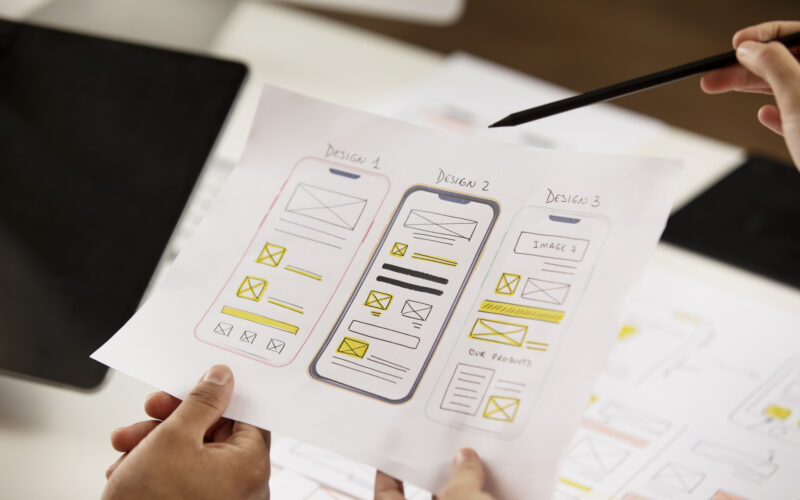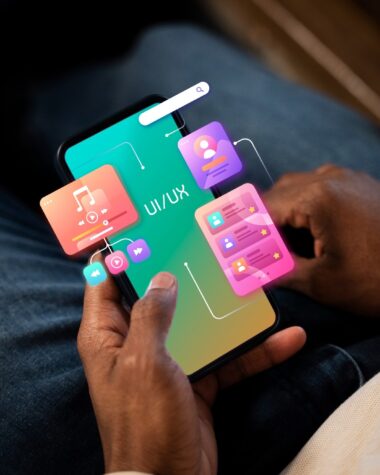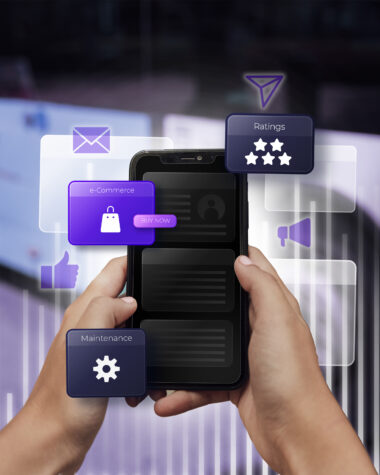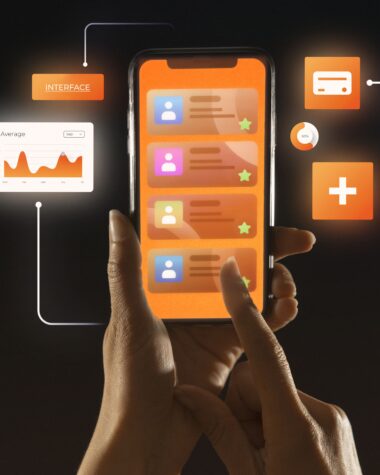Startups live and die by their ability to win over users. In a world crowded with apps, offering a functional product isn’t enough; you need to delight your users. Customers today expect smooth, intuitive experiences and will quickly abandon an app that doesn’t meet their needs or expectations. In fact, 25% of users abandon an app after just one use, often due to poor user experience or unclear value. This puts pressure on startups to not only solve a problem but to do so in a user-centric, engaging way that turns first-time users into loyal advocates. As product experts note, “Customers don’t just want their needs to be met, they want to be delighted.” The goal is to create what some call a Minimum Lovable Product (MLP) the simplest version of your app that users love, not just tolerate. How can startups achieve this? By embracing smart UX/UI strategies from day one.
In this comprehensive guide, we’ll explore how to design custom mobile apps that delight startup customers. We’ll cover how to deeply understand your target users through user personas, how to apply design thinking to craft intuitive and innovative user experiences, and what engagement tactics can keep users coming back. Throughout, we’ll emphasize a user-centered approach as practiced by successful teams and even look at how one London-based agency, Empyreal Infotech, applies these principles in real projects and in IT consultation processes too. By the end, you’ll have a roadmap for creating a product that not only meets startup business goals but also makes your users genuinely happy to hit that download button.
Why User Delight Matters for Startup Apps
In the early stages of a startup, user experience can be a make-or-break factor. Early adopters are taking a chance on an unknown product. To win them over, your app’s UX must exceed expectations. User delight refers to that extra level of satisfaction and joy users feel when an app goes beyond basic utility, delivering unexpected value or ease. This isn’t just a “nice-to-have”; it directly impacts your startup’s growth. Consider that engaged, happy users are far more likely to stick around and spread the word. Studies show engaged users are 63% less likely to churn, and 8 in 10 people will pay extra for a more engaging experience.
Moreover, 82% of engaged users will promote your app to others, essentially free word-of-mouth marketing, which is gold for a startup on a tight budget.
Delighting users can set your product apart in a saturated market. With millions of apps vying for attention, offering a mediocre experience means your startup will be lost in the noise. As one product executive put it, “Stiffer competition means that MVPs aren’t going to cut it anymore. If startups truly want to stand out, they need to strive toward creating a minimum lovable product instead.” In other words, the bar is higher now; a merely viable app isn’t enough; it should be viable and enjoyable. Delivering a polished, user-centered design from the start can turn initial users into a loyal base that fuels your growth through positive reviews and referrals.
User-centric design is the key to fostering this kind of loyalty. That means thinking about the user’s needs, goals, and emotions at every step of e-commerce development and application development. It’s not just about implementing features; it’s about how
You implement them to solve user problems in delightful ways. Small touches like a pleasant onboarding flow, fast load times, intuitive navigation, and even fun micro-interactions (tiny animations or feedback for user actions) contribute to delight. These details make your app memorable. They also give your startup an edge: if users love using your app, they’ll choose it over competitors and be more forgiving of minor hiccups or sparse early features.
Finally, focusing on user delight aligns with building a sustainable business. Happy users translate to better retention rates, and retention is a cornerstone of long-term success. Improving user onboarding alone can boost retention by up to 50%. In short, investing in UX/UI excellence early pays dividends by reducing churn and increasing lifetime value. For startups, which often operate under tight resource constraints, this is critical; you can’t afford to lose the users you worked hard (and spent money) to acquire. By aiming to delight, not just satisfy, you create a strong foundation for growth.
Understanding Your Users through Personas and Research
Delighting users begins with deep understanding. You can’t create an app people love without knowing who your users are and what they truly need. This is where user personas come into play. In the context of UX design, a persona is a semi-fictional profile that represents a key segment of your users. It’s based on real data (from user research, surveys, interviews, etc.) but amalgamated into a single character with a name, background, goals, and behavior patterns. Personas help you shift from designing for a vague “user” to designing for specific types of people with concrete needs and stories.
Example of a user persona from a research project: Detailed personas include demographics, goals, frustrations, and context of use. Design teams use these profiles to keep real users’ needs in focus during product development.
Creating user personas early in your startup’s journey is immensely beneficial. Why? Because personas humanize your target audience. Instead of thinking in abstractions (e.g., “our target is tech-savvy millennials”), your team can think, “What would Alex, a 28-year-old startup founder who is always on the go, want from this productivity app?” This mindset forces you to empathize with users and consider their perspective in every design decision. Research shows that personas “put a personal human face on otherwise abstract data about customers,” making it easier for designers and engineers to remember and prioritize user needs. By focusing on a fictional yet realistic individual, you avoid the trap of designing for an “elastic user” who conveniently likes whatever each stakeholder imagines. Instead, you anchor decisions to what your real users are likely to prefer or struggle with.
How to develop personas: Start by gathering data on your potential or current users. For a new startup, this might involve market research, competitive analysis, and a bit of educated guessing, but try to get actual feedback whenever possible. Conduct interviews or surveys, even informally. Look for patterns in user goals, behaviors, and pain points. Once you have data, cluster it into a few distinct archetypes. Give each persona a name and backstory to make them memorable. Include key details like age, occupation, tech comfort level, objectives for using your app, and frustrations or barriers they face. For example, if you’re building a finance app for entrepreneurs, you might have a persona like “Freelancer Fred, a 32-year-old graphic designer who needs simple expense tracking on the go and hates complex spreadsheets.” Fred’s goals would include quick invoicing and clarity on income, and his frustrations might include apps that have too many unnecessary features or require a steep learning curve.
When documenting personas, focus on information that impacts design. As usability experts advise, “a persona doesn’t need to document every aspect of an imaginary individual’s life but rather should focus on characteristics that impact what is being designed. ” For each persona, outline their primary goals (what do they want to accomplish with your app?), needs (what do they require to achieve those goals?), and pain points (what problems or frustrations do they currently encounter?). Also note their environment or context. Are they usually on a mobile phone in short bursts or using the app at a desk? These details influence design decisions like layout, feature prioritization, and tone of content.
Once you have your personas, use them throughout the design process. Share them with everyone on the team designers, developers, marketers, and even investors so all stakeholders have a shared understanding of who you’re building for. Refer to personas when brainstorming features or reviewing designs: e.g., “Would Persona A find this feature valuable? Would Person B understand this interface?” This keeps the discussion anchored to user-centric outcomes rather than personal preferences of the team. In practice, teams that actively use personas find it easier to make decisions that improve the user experience. Personas essentially serve as a North Star for product decisions, ensuring the real users’ voices are present even when you can’t directly ask them every time.
It’s worth noting that personas are a tool, not an end in themselves. They’re only as good as the research behind them. In a fast-paced startup, you might start with “proto-personas” based on best guesses and update them continuously as you gather more user feedback. Treat personas as living documents. Post launch, analyze who is actually using your app and how you might discover new user segments or behaviors that warrant adjusting your personas or creating new ones. This ongoing refinement helps your app stay aligned with the needs of the people using it.
In summary, investing effort into user research and personas up front will pay off throughout your design and development. It cultivates empathy in your team, a core ingredient of delightful UX. As the Nielsen Norman Group emphasizes, understanding users’ behaviors, attitudes, and goals is fundamental: “A user-centered design can only be achieved if we know who is going to use it and if that knowledge informs our design.” Personas make that knowledge concrete and usable by making characteristics of key user segments salient and memorable for the whole product team. By knowing your users deeply, you lay the groundwork for designing an app that truly resonates with them. Next, we’ll see how to turn that understanding into an effective design via the process of design thinking.
Leveraging Design Thinking in App Design
Understanding users is the first step; the next is systematically turning those insights into a great graphic design. This is where design thinking comes in. Design thinking is a problem-solving framework that centers on the user’s needs and encourages creative, iterative solution development. Unlike traditional linear processes, design thinking is human-centered and flexible, perfect for startups tackling new problems or innovating in crowded spaces. It provides a roadmap to ensure your app’s design is not only useful but also usable and enjoyable. Remember, this is beneficial for CRM development as well.
At its core, design thinking comprises five stages (with some variations in terminology by different practitioners). These are often illustrated as a cycle, because you will loop back and repeat steps as you refine your product:
- Empathize Immerse yourself in the user’s world. Gather insights about your target users (e.g. through interviews, observations, and surveys) to deeply understand their needs, desires, and pain points. For a startup app, this might mean talking to your potential customers or beta users and truly listening to their daily challenges that relate to your app’s domain. Empathy is the foundation of design thinking; as one app developer noted, “The foundation of design thinking is empathy. To design apps that solve real problems, we must understand the users who they are, what they need, and what frustrations they face.”
- Define Synthesize the information gathered during empathy work to clearly articulate the core problem or user need you intend to address. In this stage, you create a pointed problem statement or a set of user stories. For example, after empathy research, you might define the problem as “Freelancer Fred needs a way to track expenses effortlessly on his phone because he is losing hours in manually updating spreadsheets.” A well-defined problem statement focuses the team on the right challenge. It’s been said that a problem well-defined is half-solved.
- Ideate With a clear problem in mind, brainstorm creative solutions. This is where you think outside the box. Encourage quantity and diversity of ideas no idea is too crazy to suggest. Brainstorming sessions, sketching, storyboarding, or mind mapping can all happen here. For startups, ideation is often where innovative features or unique approaches emerge, because you’re seeking a novel way to delight your users. Aim to generate a range of possible solutions, then narrow down to the most promising ones that fit your users’ needs and business goals.
- Prototype Turn your best idea(s) into a tangible form that can be tested. In app development, prototyping can be as simple as drawing screens on paper or as complex as an interactive digital prototype. The key is to create a simplified version of the product that users can interact with. Prototyping is powerful for startups because it’s a low-cost way to experiment. As the HITORI app studio emphasizes, rapid prototyping is a cornerstone of an effective design process; it lets you test ideas quickly, gather feedback, and iterate “until we get it right.” By prototyping early, you reduce the risk of building the wrong thing. It’s far better to discover in the prototype stage that a feature is confusing than after you’ve written production code for it.
- Test Validate the prototype with real or representative users. Put your prototype in front of people (preferably matching your personas) and observe how they use it. Gather feedback: What did they like? Where did they get confused or frustrated? Testing often reveals that users don’t always behave as expected. Maybe that onboarding tutorial you designed wasn’t clear, or users struggled to find a key feature. These insights are gold; use them to identify improvements. After testing, you cycle back: refine the define stage (reframe the problem if needed), ideate new solutions or tweaks, prototype the changes, and test again. This iterative loop continues until you arrive at a solution that truly resonates with users. As Eleken’s design guide puts it, each time you incorporate feedback “You get back to the defined stage, then ideate… and so on,” continuously improving the solution.
One of the greatest advantages of design thinking for startups is that it minimizes waste. By empathizing and defining clearly, you ensure you’re building something people actually want. By prototyping and testing early, you catch usability issues or misaligned features before investing tons of time and money in development. This approach guards against the classic startup pitfall of spending months building a product, only to find out it doesn’t really solve the user’s problem in a delightful way. Instead, design thinking keeps you aligned with user needs at every step, from concept to deployment.
Design thinking is also a team sport. It encourages cross-disciplinary collaboration involving designers, developers, product managers, and other stakeholders in the process. In a startup, team members often wear multiple hats, and design thinking provides a common language and process they can all contribute to. For instance, during ideation, a developer might propose a technical solution that a designer builds on with a user interface idea, while a marketer chimes in with customer feedback context. This collaborative atmosphere helps ensure that the final design is feasible, desirable, and viable, hitting the sweet spot of innovation. HITORI’s founder noted that bringing together designers, developers, and strategists in a free-flowing exchange was essential, because “every decision must support the user experience and the product’s overall goals.” No single perspective is enough; it’s the blending of viewpoints, all committed to the user’s delight, that produces the best results.
Finally, consider that design thinking isn’t a one-time thing reserved for initial product design; it’s an ongoing mindset. Even after launch, you can continue to iterate using these principles. Collect user feedback (empathize), analyze new problems or requests (define), brainstorm improvements (ideate), and roll out updates or A/B test new features (prototype & test). Many successful startup apps constantly evolve this way, fine-tuning the user experience over time. This continuous improvement is often the difference between an app that quickly becomes irrelevant and one that grows a devoted user base. By ingraining design thinking into your startup’s culture, you ensure that user-centric innovation remains at the heart of your product strategy.
In summary, design thinking provides a structured yet flexible approach to designing apps that delight. Its emphasis on empathy ensures you’re solving the right problems; its iterative nature means you refine the solution through feedback, leading to a better user experience. For startup teams, it’s a proven framework to reduce guesswork and deliver a product that can truly wow your users. Next, we’ll look at specific UI/UX tactics to boost user engagement and keep those delighted users coming back for more.
Designing Engaging Experiences: Tactics to Delight Users
Once you have a good understanding of user needs and a solid design process in place, the next challenge is keeping users engaged and delighted over time. User engagement isn’t just about flashy features; it’s about creating an experience that continuously provides value and enjoyment, encouraging users to return frequently. Here we’ll cover several proven engagement tactics for mobile apps and how to implement them in a user-centric way.
- Craft a Smooth Onboarding Experience: First impressions are everything. As noted earlier, a huge portion of users abandon apps after the first use. A well-designed onboarding flow can dramatically improve your retention. Onboarding includes the steps a new user goes through when they first open your app; it might be a sign-up process, a tutorial, or a guided setup. The key is to demonstrate your app’s value quickly and clearly. Don’t dump a wall of information, but do highlight how to get started and what key benefit they’ll get. For example, many successful apps use a “show, don’t tell” approach: a few swipe able screens or a short animation showcasing core features, or an interactive tutorial that lets users try out main actions. Research has found that effective onboarding can lift retention rates by up to 50%. Onboarding is essentially the app’s welcome mat; make it inviting, easy, and indicative of the great experience to come. Tips for onboarding include allowing users to skip tutorial steps if they’re familiar, asking only for necessary permissions upfront (explaining why if you do), and possibly personalizing the intro if you know something about the user (e.g., greet them by name, or tailor content based on how they signed up).
- Prioritize Usability and Performance: Users can’t be delighted if they’re frustrated by basic usability issues. Ensure your app follows established UX best practices such as intuitive navigation, consistent design patterns, readable typography, and accessible interface elements (e.g., buttons that are easy to tap on small screens). Simplicity is crucial; startup apps should focus on doing a few things really well. A cluttered interface or convoluted user flow will drive users away. Similarly, performance (speed and reliability) underpins engagement. Long load times or frequent crashes are sure ways to kill delight. Optimize your app’s performance so that interactions feel instant and smooth. Micro-optimizations like quick response to taps, fluid animations at 60 fps, and graceful handling of poor network conditions all add up to an experience that “just works” and feels polished. Users often don’t notice when an app is fast and easy, which is good, because it means the technology fades into the background and they can focus on the value. They do notice when an app is slow or confusing. So, fix the basics: eliminate friction in user flows wherever possible. For instance, if your startup app requires account creation, consider allowing social logins or letting users explore in a “guest mode” with an option to sign up later once they’ve seen value. Reducing any unnecessary step or hurdle will keep more users engaged.
- Personalization: A powerful way to delight users is to make the experience feel tailored to them. Personalization can be as simple as remembering user preferences (like dark mode or their last used filter in a camera app) or as complex as algorithmically curating content (like a personalized news feed). The goal is to show users content and options that are relevant to their interests and usage patterns. For example, a fitness app could personalize by recognizing if a user often logs runs in the morning and then suggesting a new morning running challenge. When users see content that resonates with their needs or tastes without having to hunt for it, they feel understood by the app, almost as if it “gets” them. This not only delights but also increases engagement because users are more likely to find value every time they open the app. Be mindful with personalization, though: it should be helpful, not creepy. Clearly explain any data you collect for personalization and give users control over their settings. Done right, personalization strengthens the bond between user and product.
- Gamification and Rewards: Gamification means incorporating game-like elements into your app to make using it more fun and motivating. This tactic has been incredibly successful in driving engagement for many types of apps. Common gamification elements include points, badges, leaderboards, challenges, and rewards for completing certain actions. These tap into basic human drives like competition, achievement, and social connectivity. For instance, language-learning app Duolingo famously uses gamification, awarding badges for streaks and allowing users to compete with friends, which contributed to a 116% jump in referral rates when they introduced a badge reward system. By making the experience playful, users often stick around longer and return more frequently. Another example: a task management app might give you virtual “high fives” or progress bars as you complete to-dos, which makes productivity feel like a game where you want to reach 100%. However, when gamifying, ensure the game elements align with meaningful use of the app (don’t reward pointless clicking; reward progress that matters to user goals). Properly applied, gamification can increase what UX experts call the “stickiness” of an app how likely users are to keep coming back. One caveat: different users respond to gamification differently. Your personas can guide you here; e.g., competitive personas may love leaderboards, while others might prefer personal progress tracking over competition. So, consider offering multiple types of rewards (achievement badges and personal best stats, for instance) to appeal to a range of motivations.
- Encourage Social Interaction and Virality: Humans are social creatures, and integrating social elements can boost engagement significantly. Think about how your app can allow users to share or connect. This could be direct social features in-app (like a friends list, chat, or community forum) or simply making it easy for users to share their achievements or content on external social media. Social proof and community can strongly contribute to user delight: it feels good to be part of something or to show others what you’ve done. For example, a fitness app might let users follow friends and cheer each other on, or a creativity app might have a feed of user-generated content where people can like or comment. Even if your app is single player in nature, consider adding a lightweight social feature, perhaps as simple as an option to share a cool infographic of the user’s progress or results. Not only does this engage the user by letting them reflect on and broadcast their experience, but it can also attract new users (word-of-mouth marketing). Statistics show 92% of consumers trust recommendations from friends and family over any form of advertising, so if you delight one user enough that they tell others, it can set off organic growth.
- Solicit Feedback and Iterate: Engagement is also fostered by listening to your users. Provide channels for feedback, whether through an in-app feedback form, periodic surveys, or community forums. When users feel their voice is heard, they become more invested in the product. Moreover, the feedback you gather can inform your product roadmap (tying back into design thinking’s iterative cycle). For example, if many users request a certain feature or complain about a particular pain point, addressing it in a future update not only improves the app but also shows users you care, which strengthens loyalty. You can even engage users by involving them in your development process: consider a beta tester group for new features or a vote on upcoming ideas. This sense of co-creation can delight users because they see their input shaping the app’s evolution.
- Regular Updates and Fresh Content: To keep users coming back, give them something new to see or do. Stagnation is the enemy of engagement. That doesn’t mean you need to roll out major new features every week (which isn’t realistic for most startups), but plan a cadence of improvement on seven small ones and communicate them. New levels in a game, new filters in a photo app, seasonal themes, and content updates (like articles, videos, or tips if your app has a content component) can all re-engage users. Many apps send update notes or in-app notifications highlighting “what’s new.” Seeing an app that continually improves or expands content signals to users that it’s alive and worth maintaining a relationship with. Importantly, optimize your update strategy based on data: use analytics to see which parts of your app are most used or where drop-offs happen, and target updates to enhance those areas or fix issues. A data-informed approach ensures your efforts hit the mark in improving engagement. Also, consider timing. For example, some apps find success in aligning updates with user milestones (like sending a new feature unlock when a user has been active for a month) as a form of reward.
- Microinteractions and Delightful Details: Finally, never underestimate the power of small design details to enchant users. Microinteractions, those tiny animations or responses to user actions, can make your app feel alive and enjoyable. For instance, a subtle bounce animation when a user pulls to refresh content, or a fun sound/vibration when they accomplish a task, or an animated character that gives a thumbs-up when a form is completed these are little moments of delight. They provide immediate feedback and can even convey personality or humor. When done well, microinteractions make the user smile and create an emotional connection with your app. The key is subtlety and purpose: every microinteraction should serve a function (e.g., confirm an action or guide the user) and not be overly distracting or gimmicky. Used thoughtfully, they “transform an ordinary experience into something delightful.” A famous example is the “like” animation in many social apps (like the burst of hearts when you like a post on Instagram); it’s quick, satisfying, and encourages the user to continue interacting. Think about places in your app where a microinteraction could reduce friction or reward the user: button taps, loading states, pull-to-refresh, and error messages (even an error can be friendlier with a bit of character in the copy or animation). These polish elements often distinguish a beloved app from a merely functional one.
In implementing engagement tactics, remember to stay user-centric and measure impact. Not every tactic is appropriate for every app or user base. Refer back to your user research and personas: which tactics align best with what motivates your users? Prioritize those. Then, use analytics to track if engagement actually improves. Look at metrics like daily active users, session length, feature usage frequency, and retention cohorts. For example, if you add a gamification feature, does the cohort of users who use it retain better than those who don’t? Data will tell you if a tactic is working or if it needs tweaking. Engagement is as much a science as an art.
By combining these strategies, smooth onboarding, usability, personalization, gamification, social features, feedback loops, regular updates, and delightful details you create a rich tapestry of engagement hooks throughout the user’s journey. The result is an app experience that not only fulfills a need but also keeps drawing users back and putting a grin on their face. Next, let’s see how these principles come together in practice by looking at an example of a user-centric design approach from an expert team.
User-Centric Design in Practice: The Empyreal Infotech Approach
It’s clear that building a delightful app experience requires a mix of research, creative design, and technical excellence. Startups don’t have to tackle this challenge alone; many turn to experienced design and development partners to bring user-centric ideas to life. One such example is Empyreal Infotech, a custom software development and mobile app development company based in Wembley, London. Led by Mohit Ramani, who has also co-founded top webflow agency Blushush and personal branding agency Ohh My Brand. Empyreal Infotech is known for its user-centric design process and integrated approach to building digital products.
Empyreal Infotech’s philosophy centers on blending technical development with creative UX/UI design from the very inception of a project. Rather than treating design and development as separate silos, their team works holistically. Mohit Ramani, the CEO of Empyreal, describes their approach: “Our partnership focuses on seamlessly integrating technical development, creative design, and strategic storytelling from the inception of every project. By harmonizing these critical elements early, we significantly improve product quality and reduce delivery times.” In practice, this means that from day one of a project, designers, developers, and branding experts collaborate closely, echoing the cross-disciplinary teamwork we discussed in design thinking. This user-first, all-hands approach ensures that every aspect of the app serves the end-user’s experience and the brand’s vision in unison.
What does a user-centric process look like at Empyreal? It begins with thorough discovery and user research. Even as a development-focused company, Empyreal places heavy emphasis on understanding the client’s customers (the end users of the app). They define user personas and user stories to drive the project requirements. This aligns with what we highlighted earlier: knowing the user informs all design decisions. Next, Empyreal employs an iterative design cycle, prototyping and testing concepts before heavy development. They often create interactive prototypes or MVPs and gather client and user feedback. Because they integrate branding (“strategic storytelling”) into this process, the result is an app that not only functions well but also feels cohesive and engaging. As Mohit’s partnership example indicates, branding and UX are intertwined. “A strong brand narrative isn’t just about the message conveyed; it’s about shaping user experiences from the ground up.” This perspective ensures that apps built by Empyreal Infotech are designed to resonate emotionally with users, not just serve a utility.
Empyreal’s track record showcases the effectiveness of this approach. The company is recognized for delivering innovative mobile applications globally, serving clients ranging from startups to enterprises. They frequently work on cutting-edge solutions (including cloud-based platforms and AI integrations) but always with a lens of how these technologies improve the user experience. By focusing on “integrated digital solutions” that blend backend engineering, user-friendly design, and consistent branding, Empyreal is able to streamline projects and accelerate time-to-market for startups without sacrificing quality. For a resource-strapped startup, having a partner that can compress development cycles while maintaining a user-centered design can be invaluable. It means getting a polished, user-approved product into users’ hands faster and iterating with real-world feedback.
Another hallmark of Empyreal Infotech’s user-centric process is constant communication and transparency. They use shared project management systems and a centralized client engagement portal so that everyone developers, designers, and the startup founders stay on the same page. This is crucial for maintaining a focus on the end-user. When the whole team (including the client) can see the timelines, user feedback, and design updates in one place, it’s easier to make collective decisions that benefit the user experience. It also prevents the common scenario of “feature creep” or misaligned expectations, which can derail the UX if not managed. By having unified documentation and clear checkpoints, Empyreal ensures the project never loses sight of for whom they are building the app.
Crucially, Empyreal Infotech exemplifies how user-centric design is also good business. Their integrated approach has been shown to improve efficiency and product quality. This aligns with a broader industry insight: when design and development teams work in tandem with a clear focus on user needs, there are fewer reworks and smoother delivery. Early integration of UX can catch issues that might otherwise surface later as expensive changes. Empyreal’s clients benefit by getting a better app for their users and doing so in less time. It’s a win-win scenario: the startup’s users are delighted, and the startup can grow faster. Empyreal’s emphasis on innovation (such as exploring AI-enabled customization in apps) also means they help startups leverage the latest tech in a user-friendly way, keeping the startup’s offering competitive and cutting-edge.
In summary, Empyreal Infotech’s user-centric design process is a real-world validation of the principles we’ve discussed: know your user, integrate design thinking, and focus on engagement and quality from the start. Their work, led by Mohit Ramani in collaboration with branding experts (like those at Blushush and Ohh My Brand), demonstrates that a holistic approach to UX/UI one that merges visual design, user experience, and robust development yields apps that truly delight users. Startups partnering with agencies like this can accelerate their journey toward a lovable product. As Empyreal’s London-based team has shown, keeping the user at the heart of every decision is the secret to building apps that succeed in the market and create lasting impressions on customers.
Conclusion
Designing a custom mobile app that delights startup customers is no small feat, but it’s increasingly the cornerstone of startup success. By now, it should be clear that the key lies in putting the user first at every step. From the initial idea through to the final polish, user-centric thinking guides you to make the right choices. Let’s recap the journey:
- Start with the user and never lose sight of them. Invest time in understanding your target audience through research and detailed user personas. This gives you a concrete picture of who you’re designing for and what will make them happy. When the user’s goals and pain points are well-defined, you can focus your efforts on features and experiences that truly matter.
- Use frameworks like design thinking to translate insights into an intuitive UX. Approach problem-solving with empathy and creativity. By iterating through empathize → define → ideate → prototype → test, you ensure your app’s design is validated by real user feedback and continuously refined. This not only leads to a better product but also saves precious time and resources by catching issues early. The result is a solution that not only works on a technical level but also feels right to the user.
- Be deliberate in crafting engagement and delight. Remember that an app must earn the user’s continued interest. Smooth onboarding, a fast and friendly UI, personalization, gamified rewards, social sharing opportunities, and those delightful little micro interactions all contribute to a “sticky” user experience. Each tactic, from the first-use tutorial to the hundredth session’s new content drop, should aim to provide value or joy (ideally both). Engaged users stick around; they become loyal customers and outspoken ambassadors for your brand.
- Iterate and improve relentlessly. A delightful app is not built in one go; it evolves with its users. Pay attention to analytics and user feedback. Update your app regularly with improvements that address user needs or introduce delightful new elements. This shows users you care and keeps the experience fresh. As the mobile app market grows ever more competitive, the apps that will thrive are those that continue to listen and adapt to their users’ expectations.
- Consider expert help to amplify your efforts. Startups often have small teams and limited bandwidth. Collaborating with UX/UI specialists or agencies (like Empyreal Infotech in London, in our example) can inject valuable expertise and manpower to execute a user-centric vision at a high level of quality. The right partner will share your passion for user delight and bring structured processes and experience to streamline your app’s development. Whether in-house or through a partner, ensure that user experience is given a seat at the table in every major product decision.
Ultimately, designing a delightful app is about empathy and excellence. Empathy for your users, understanding their lives, challenges, and what excites them, and excellence in execution, turning that understanding into a polished, enjoyable product. When a startup successfully marries these elements, the results speak for themselves: users not only accomplish their goals with the app, but they also have a great time doing so. And a happy user is the foundation of a successful startup. In today’s world, users have countless options and very high standards. By following the UX/UI strategies outlined here from persona-driven design to engaging UI tactics you position your startup to not just meet users’ needs but to wow them. And when you can wow a customer, you’re well on your way to converting them into a fan who sticks around and helps your startup grow. Delight is a differentiator. Make it a core value of your app design, and you’ll build not just an application, but an experience that resonates and succeeds globally. By keeping your process user-centric and quality-focused, and perhaps leveraging the expertise of user-focused teams like Empyreal Infotech, you can turn your app idea into a product people love. The effort is substantial, but the reward is a community of satisfied users and a startup product that can confidently stand out in the market. Here’s to designing mobile apps that people truly enjoy and to delighting your startup’s customers from day one. Contact Empyreal Infotech today for further information.








